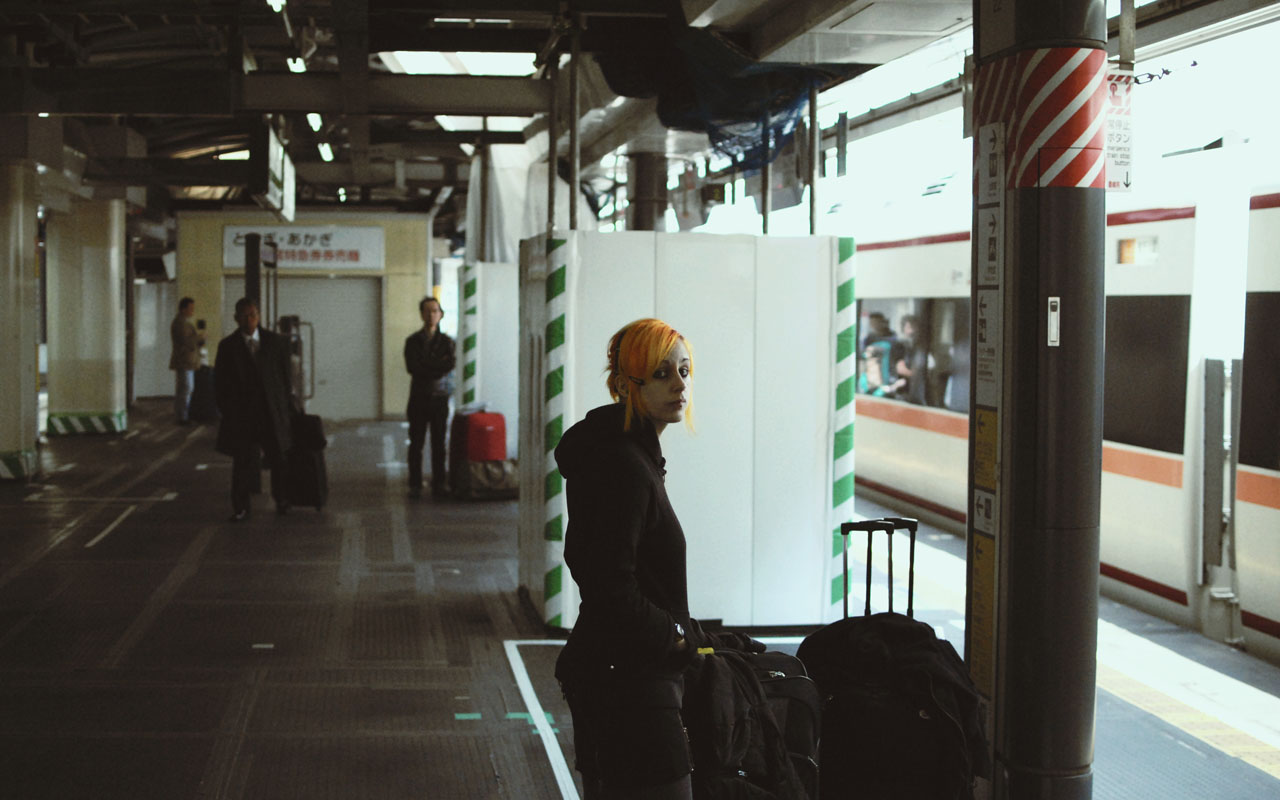What led you into design?
I am not sure that I have arrived into design yet. But I certainly have been falling toward it from an early age. My first memories of optimizing for aesthetics had to do with evocative video game HUDs. From flight simulators to turn-based RPGs, I gravitated toward the ones where most of the actual game experience happened within the interface itself. This manifested later in my enjoying of games like Eve Online and Spacechem, where the player seldom ever even leaves the interfaces to look at the actual game context.
In my early internet days, most of my time went into art communities and design groups. Some of the best memories I have of that era were that of the countless hours I spent on sites like Shadowness, Angelworld, Raster and Depthcore.


What does a typical day look like?
My typical day begins with my eyes closed, at around 7:00 am, I tend to try and keep them closed until I have mentally drafted a rough plan of the things I will want to have done by the end of it. I then rise, grind coffee. I usually ever only drink one cup per day.
I immediately set off to complete the task I have eye-closely planned. No email, no chat. I know myself to have 2 hours of undisturbed flow before the distraction surrounding lunch-time pull me away from the screen. My goal is usually to have done a singular task per day, the daily task is devised in a way that it should take about 3 hours to complete - Across roughly 5 or 6 pomodoro grinds.
After the last pomodoro, I tend to cook. I try as much as possible to take an hour for lunch to try and exit the state of flow. The afternoon is spent doing maintenance or superficial work, experiments. But mostly, the afternoon is spent reading and learning. The goal is to build a catalog of exciting things to wake up to the next day and to experiment with. The superficial work that I do involves answering replies onto the various blogs that I visit, merging Pull Requests to the repositories that I collaborate on, editing Wikipedia entries(really, mostly just fighting on :talk), answering emails such as this one & so on.
The day ends with journaling in which I record the task done, and if any, the lessons learned. I usually go to sleep with a book and a highlighter pen. I'm currently reading Caputo's Hermeneutics, I overline the things I want to keep for a later use, or to revisit.



What’s your setup?
I have two different setups, I have a distractionless setup, which is the one with which I am answering this email, and a digital arts setup.
Distractionless(RPi)
This first setup is a raspberry pi, a small 7" screen, and a mechanical keyboard. It doesn't even have a desktop environment. The rig is documented here. Its purpose is to read/write long-form stuff, browsing long blog post with nothing besides music to pull me away from the task at hand.
Distractionfull(OSX)
The second setup is an old MacBook Pro with an even older Wacom Tablet. With this one, I do front-end works, be it layouts, websites, apps, and games. It has slack, Twitter and all sorts of other distractionwares. It's my early afternoon computer.






Where do you go to get inspired?
I share a small chat channel with a few online friends and whenever I need a new toy, a new favourite thing or some help I can find it there. While it is not a public place for anyone to visit, my point is instead to suggest that anyone who's looking for inspiration build a place where they can feel at ease to experiment, show works-in-progress and exchange on art and science in a safe place among like-minded people.
In truth, I think I find a lot of my ideas while cycling. But that's not really a place either.




What product have you recently seen that made you think this is great design?
There are a few things that gave me this sense of wonder, although they are not necessarily products. Among the ones that have given me vertigo with how good of a design it had, was the "Carrick Bend" knot. It's a simple knot, but it is infinitely pleasing aesthetically. I've recently learned how to make a origami pentagon, and this, also, has blown me away with its elegance and simplicity.
The greatest designs are often hidden in plain sight.




What pieces of work are you most proud of?
Among all the apps and games that I have built, Dotgrid would be the one I use the most. But the one I am most proud of is my own website. It has been around for the better part of the last 10 years, and it is now an extension of myself, it's a repository of what I know, and what I am hoping to learn.
Ecosystem, incl Dotgrid

What design challenges do you face at your company?
The two main challenges of hosting a studio aboard a sailboat are: power, and internet connectivity. We currently power our studio's battery bank with solar panels. The Internet is only available when near the shore, and in most cases, we have anchored outside and away from the cities. Over time, you begin building around the more power-efficient applications and stay away from software that requires constant internet connectivity.



What music do you listen to while designing?
Any advice for ambitious designers?
Dieter Rams have worded advice in the form of a reminder that, I believe, too few have been exposed to, if I may be so stereotypical, here they are once more:
- Good design is innovative.
- Good design makes a product useful.
- Good design is aesthetic.
- Good design makes a product understandable.
- Good design is unobtrusive.
- Good design is honest.
- Good design is long-lasting.
- Good design is thorough down to the last detail.
- Good design is environmentally friendly.
- Good design is as little design as possible.








